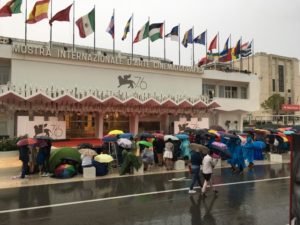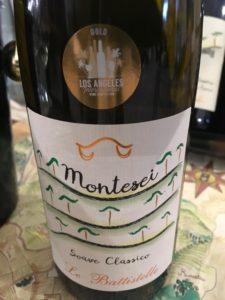Verona, where I have made my home for over twenty years, is seventy-five miles from Venice, one hundred miles from Milan and light years from El Dorado, Kansas, where I grew up reading Black Arrow, Nancy Drew, and The Three Musketeers. I would climb right down inside each story and live within it. They offered me windows on worlds that I could not actually see from my vantage point on the Great Plains, where the only sound was the relentless wind sweeping across the fields, and the view consisted of a flat yellow line of golden wheat crisply abutting a cloudless blue sky.
I never thought I would later live for years in New York, working as an analytical reader for publishers and film companies before joining the wine trade. I never thought I would live in London for four years studying blind tasting and brokering fine wine. And I certainly did not think I would live in Italy, writing books and articles about wine.
What follows is my monthly diary. At the end of each month, I will post a new entry that will include descriptions of vineyard visits, interesting wines tasted, odd and wonderful people I’ve met, slices of Italian life and, every now and then, a lesson about Italian wine and wine tasting
September 6 Venice in the Rain

Our friend Ugo Brusaporco is a film critic who will declaim poetry at the drop of hat. He attends all the major European film festivals: Berlin, Cannes and, of course, Venice, where he organizes an alternative awards presentation at which he confers the coveted Bisato d’Oro (the Golden Eel, as opposed to the Golden Lion). This joyously chaotic event is held at Da Tiziano, a pizzeria/osteria just down the street from one of the festival cinemas.
The winner of the Best Documentary, Brazilian Bárbara Paz, happily accepted her Bisato d’Oro on Friday and, on Saturday, was called to the stage of the Sala Grande to receive the Festival’s official recognition for Best Documentary about Cinema.

Barbara Paz
This year’s Bisato d’Oro for best film went to the Australian film Babyteeth. The director, producer and principal actors all turned up at the pizzeria. The film’s director, Shannon Murphy, told me: “My two favorite moments from the festival are tonight and being at the Festival press conference, because they were so honest and touching.”
The day after Ugo’s event, Toby Wallace, who plays Moses in Babyteeth, won the Marcello Mastroianni Award for Best Young Actor. Here is a photo of Toby observing 82-year-old journalist Paolo Micalizzi, who has been covering the Venice Film Festival since 1964.

Toby Wallace (white t-shirt)
3 September A New and Improved Vintage Report from ASSOENOLOGI
First, let me explain how these annual events are usually conducted: a man in a suit stands in front of a projected slide filled with tiny numbers and says phrases like “million hectoliters” and “percent export” and “average rainfall”.
This time the organizers created a truly useful and interesting experience. A representative from each of the fifteen wine zones in the Veneto communes of Verona, Vicenza and Padua presented a wine from the 2017 and 2018 vintages, along with a brief look at expectations for 2019. This allowed journalists to get a bead on the evolution of the wine, and to get an understanding of each of the zone’s particular microclimates.
Ricardo Cotarella, internationally famous winemaking consultant, kicked off the morning by saying: “You can no longer define a vintage with one adjective – great, good, average, poor – because the weather in the last five years has changed radically, with sudden bursts of heavy rain followed by unprecedented, intense heat.” He went on to point out that now more than ever an understanding of microclimates is essential when assessing a particular vintage.
Cotarella summed up the morning by praising the unity among producers and Consorzi that allowed them to put aside local rivalries and work together for the good of the area. Adding: “Questo è poco italiano.” (This is not typical Italian behavior).
1 September The Annual Soave Versus Tasting
I have been following the fortunes of Soave for close on thirty years and have seen at first hand its rise in status. That said, I am still alarmed at the number of consumers who do not realize that Soave’s profile has expanded to include not just attractive quaffing wines but also bottles of rare elegance and finesse.
Two producers of this latter style are Le Battistelle (http://www.lebattistelle.it/) and Gini (http://www.ginivini.com).
One of the variables that account for the differences in Soaves is the decision to make a 100% Garganega or to blend a minimum of 70% Garganega with other white varieties, such as Trebbiano di Soave or Chardonnay.
 “Working with 100% Garganega isn’t easy,” says Cristina Dal Bosco, who along with her husband Gelmino owns the Le Battistelle estate. “We have to be very careful, constantly checking that the temperature during fermentation remains cool. This ensures that the variety can fully expresses itself.”
“Working with 100% Garganega isn’t easy,” says Cristina Dal Bosco, who along with her husband Gelmino owns the Le Battistelle estate. “We have to be very careful, constantly checking that the temperature during fermentation remains cool. This ensures that the variety can fully expresses itself.”
Le Battistelle’s 2018 Montesei Soave Classico is elegant and lively on the palate, with a gentle wave of apricot-tinged fruit. Very appealing, and versatile when it comes to matching with food.
“Our importer in California entered this wine in the Los Angeles International Wine Competition. Montesei not only won a Gold Medal for the wine but also one for its label,” says Cristina.
Another factor in Soave’s quality equation is the age of the vines.
“Old vines of Garganega suffer less from heat and drought than younger vines”, says Claudio Gini, whose family’s Garganega vineyards are on average 60 years old, with some vines over 100. “Sandro (his brother) and I have never planted a new Garganega vineyard in our lives, we prefer to maintain the ones we have. After fifty years the vine’s average production is reduced to about a third but the quality is enriched.

winemaker Claudio Gini
Gini’s 2018 Soave Classico is sprightly, with a rich evolving fragrance that includes ideas of pears, apricots and spring meadows. It dances across the palate.
We also tasted 2016 Contrada Salvarenza “Vecchie Vigne”, 100% Garganega from 100-year-old vineyards. Finesse and a firm backbone. A vibrant amalgam of fragrances and flavors (juicy pears, apricots, meadow grass). Its long, lingering finish continues to give satisfying pleasure. Salvarenza wines are very long-lived and worth cellaring (or, in our case, closeting).
Just so you know, Claudio has recently seen the 2012 vintage of this wine at restaurants in the States going for 250 dollars a bottle.
I have tasted the wines of each of these producers for many years – over a decade in the case of Le Battistelle and since the 1990s for Gini. The test of a great producer is the ability to make wines that – year in and year out – give pleasure and maintain the winery’s high standards.
Were there other fine wine producers at the tasting? Of course there were. However, I was caught up (on the first row) in a series of food demonstrations that lasted quite a while. So, I didn’t have enough time to taste all the wines properly. Other top-drawer Soaves will get a mention in future.
